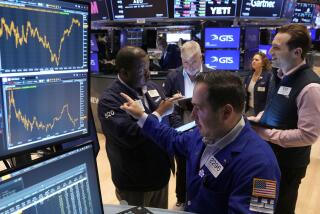Fed says economy has picked up as it cuts bond buys further
The Federal Reserve said the economy is gaining momentum as consumers spend more, and said it would continue to trim the pace of bond purchases.
“Growth in economic activity has picked up recently, after having slowed sharply,” the Federal Open Market Committee said today in a statement following a meeting in Washington. “Household spending appears to be rising more quickly.”
The committee pared monthly asset buying to $45 billion, its fourth straight $10 billion cut, and said further reductions in “measured steps” are likely.
Fed Chair Janet Yellen is winding down record stimulus as the world’s largest economy shows signs of rebounding from a first-quarter standstill. At the same time, the Fed repeated that it’s likely to keep the benchmark interest rate near zero for a “considerable time” after bond purchases end.
Fed officials repeated long-term inflation expectations remain stable. The central bank’s preferred gauge of consumer prices climbed 0.9 percent in the year through February and hasn’t exceeded the Fed’s 2 percent goal since March 2012.
Bond purchases will be divided between $25 billion in Treasuries and $20 billion in mortgage debt.
The Fed kept its forward guidance on borrowing costs, saying it will consider a “wide range of information” in deciding when to raise the benchmark federal funds rate, or the cost of overnight loans among banks.
The decision was unanimous.
Stocks were little changed after the statement, with the Standard & Poor’s 500 Index rising less than 0.1 percent to 1,879.55 2:03 p.m.
The Fed acted after a government report today showed the economy slowed more than forecast in the first quarter as harsh winter weather chilled investment and exports dropped. The 0.1 percent annual pace of expansion followed a 2.6 percent gain in the fourth quarter.
Consumer spending remained strong at a 3 percent pace, today’s report showed, and recent data on payrolls, manufacturing and retail sales indicate the economy is gaining strength. Growth is forecast by economists to accelerate to a 3 percent pace this quarter.
Private employment in March exceeded the pre-recession peak for the first time as payrolls excluding government agencies rose by 192,000 workers.
“We’re definitely seeing a pickup from what was an unexpectedly weak first quarter,” Keith Hembre, who helps oversee $120 billion as chief economist at Nuveen Asset Management LLC in Minneapolis, said before the Fed statement. Hembre is a former researcher at the Minneapolis Fed.
Companies probably added another 215,000 workers to payrolls in April, according to the median forecast in a Bloomberg survey of economists ahead of a Labor Department report in two days. The jobless rate is projected to decline to 6.6 percent from 6.7 percent.
While unemployment is down from 10 percent in October 2009, it’s still above the 5.2 percent to 5.6 percent range that the Fed considers full employment.
Yellen said on April 16 the Fed has a “continuing commitment” to support the recovery even as policy makers see the central bank meeting its mandate for full employment by late 2016.
“The larger the shortfall of employment or inflation from their respective objectives, and the slower the projected progress toward those objectives, the longer the current target range for the federal funds rate is likely to be maintained,” Yellen, 67, said in a speech to the Economic Club of New York.
The Fed last month dropped a commitment to keep the rate near zero at least as long as unemployment exceeds 6.5 percent and the outlook for inflation is no higher than 2.5 percent.
It scrapped the thresholds after the jobless rate fell to 6.7 percent, even as other gauges showed continued weakness.
One example: more than 3.7 million Americans have been unemployed six months or longer. Their share of the total ranks of the jobless exceeded 30 percent for the first time in 2009 and hasn’t fallen below that level since.
The housing market is another source of concern. A driver of the five-year recovery, housing is cooling as higher prices and mortgage rates deter buyers. Sales of new homes slumped 14.5 percent last month to a 384,000 annualized pace, the weakest since July.
The stock market has lost momentum as investors questioned whether earnings growth is too slow to justify equity valuations. The S&P 500 is up less than 2 percent this year, following a 30 percent surge last year that was fueled in part by the Fed’s record stimulus.
Even with the headwinds for housing, Wells Fargo & Co. posted a 14 percent increase in first-quarter earnings as fewer customers missed loan payments.
“I’m optimistic about future economic growth, because consumers and businesses have continued to improve their financial conditions,” Chief Executive Officer John Stumpf said on an April 11 conference call.
More to Read
Inside the business of entertainment
The Wide Shot brings you news, analysis and insights on everything from streaming wars to production — and what it all means for the future.
You may occasionally receive promotional content from the Los Angeles Times.










